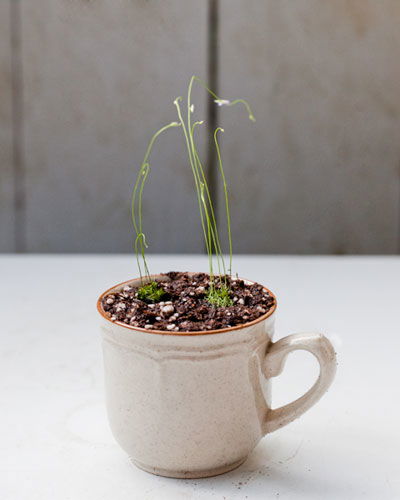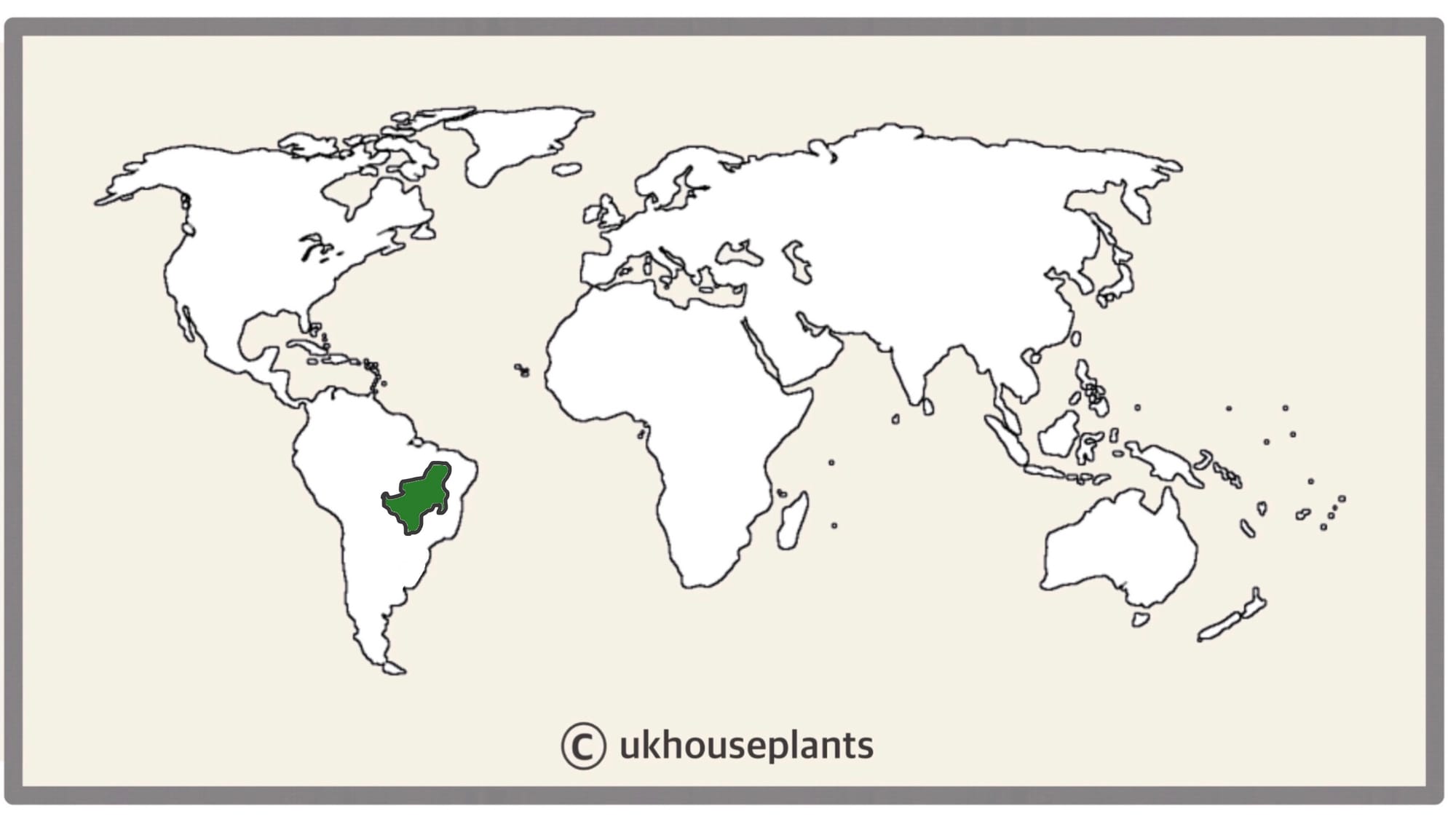
Utricularia gibba. Copyright: The Carnivore Girl
Contents
- Top Tips
- Location, Water, Humidity & Fertilisation
- Dormancy Care
- Common Issues
- Origins, Temperature, Propagation, Repotting & Toxicity.
Need the answer to a specific plant query? Book a 1-to-1 video call with THE HOUSEPLANT DOCTOR™, the website's friendly author, to overcome and address your niggling problem! Available on iMessage, WhatsApp, Facebook Messenger & more.
Top Tips & Info
- Care Difficulty - Easy to Moderate
- We recommend maintaining evenly moist soil to avoid any risk of droughts or irregular hydration which may cause weakened health.
- Situate the specimen in a location that offers a few hours of either morning or evening sunlight. Those kept in darker settings are more likely to adopt basal rot.
- Repotting is a rare practice for carnivorous plants, as their root systems tend to be relatively sparse. Only use a 'Carnivorous' labelled potting mix during a transplant, as anything else will contain too many chemicals that'll lead to root-burn.
- It's entirely reasonable for a loss of leaves over the winter months, as long as there's still a few healthy leaves leftover.
Location & Light - 🔸🔸🔸
It's mandatory to provide a location that offers a few hours of morning or evening sunlight. Windowsills, semi-shaded conservatories or a porch is an ideal setting for the species. Areas that are too dark will result in yellowed lower leaves, slowed growth and a tendency to adopt basal rot.
Water - 🔸🔸🔸
These plants must sit in continual moist soil, with specimens left outside or near a window being monitored frequently. Under-watering symptoms include browned leaf-tips, stunted growth and rapidly declining foliage - be sure to place the pot around 1cm deep in water to counteract dehydration. Those situated in brighter areas will have their compost dry significantly quicker than others in cool, darker settings. Over-watering symptoms include a rotten crown, mouldy soil and yellow or brown lower leaves. Take the specimen out of its pot and inspect its root health; if you feel that root rot has taken over, be sure to visit this link!
Which are the best types of water to use on a Ultricularia Bladderworts are:
- Rainwater (dirty looking water is fine!)
- Deionised water
- Distilled water
- Water from a dehumidifier
If you don't have access to these waters, try boiling tap water and sitting it on the side for 12 hours, before running it through a Brita-style filter.
Which are the worse water Types? Do NOT Use:
- Pond water that is high in nitrates (fish excrement)
- Bottled mineral or spring water (or if it's high in lime).
Humidity - 🔸🔸
Create a humidity tray to provide a moist and stable environment. If the surrounding saturation is too low or the heat too high, its foliage may start to brown over and curl at the tip, especially in strong light.
Fertilisation -
Many people panic over what to feed their Bladderwort. Unlike most carnivorous plants, these will perform their digestive activities beneath the soil line. They'll feed off fungus gnat larvae and soil mites, producing beautiful yellow, white or purple flowers in the spring or summer months. With this in mind, you won't need to use a plant fertiliser and instead let the plant be; the nourishment from the sun and soil-borne pests are all that's needed for fertilisation.
Dormancy Care
The final element for a long-lasting carnivorous plant is a vital resting period during the autumn and winter months. While keeping the soil moist, reduce insect-feeds to almost none, as wild soil-borne prey tends to be less in numbers during this time. Reduce the ambient temperature to around 12℃ (54℉) during the night to reinforce this critical period - even a cool windowsill will be sufficient enough. If its dormancy is served well, you'll be rewarded with a flurry of juvenile growth towards the start of the spring season.
Those that don't serve an adequate dormancy period will show signs of weak spring growth, along with a shorter life span.
Common Issues with Bladderworts
Too little light accompanied by water-logging will cause the lower leaves to rapidly yellow and rot. Although this is a natural response to ageing on a smaller extent, persistent yellowing and a near absence of foliage should only occur during the winter. If this is the case during the height of summer, action must be taken immediately. Place the plant in a location that receives little direct sunlight out of peak hours, or outside if possible. Although it will take several weeks for the plant to start to recover, better-growing conditions with the occasional insect will significantly benefit its overall health. Other causes for yellowing leaves are sun-scorch or the use of a non-carnivorous potting mix. Bladderworts must not be repotted into any other compost, as the chemicals will quickly lead to root-burn and inevitable death.
Cold tap water will quickly damage the plant with foliage-loss and stunted growth. The cold temperatures and high levels of chloride typically found with taps water should be replaced by either rainwater or fresh bottled water. If you were to use water from the tap, help the situation by allowing it to stand for 24hrs in a non-mental container before application.
Mould developing on the soil means two things - too little light and over-watering. Despite the harmlessness, it'll prove unsightly to most gardeners and is therefore removed once known. To remove, replace the top two inches of the soil for a fresh batch of 'Carnivorous' labelled compost. Either increase the amount of light received (no direct sunlight for the first few weeks to prevent environmental shock) or decrease the frequency of waters slightly. If the mould is accompanied by yellowing lower leaves, you may also have a case of root rot.
Origins
Utricularia is a genus of around two hundred species, with natural distributions across six of the seven continents, except Antarctica. The most popular indoor species, Utricularia longliflolia, was first penned by George Gardner in 1842, using the specific epithet to describe its thin, long leaves that appear from the basal structure under the soil line. Utricularia comes from the Latin meaning 'bladder', utriculatus, referring to the underwater bladder-shaped traps that act as a vacuum when prey is detected.
 The Distribution of Utricularia longlifolia.
The Distribution of Utricularia longlifolia.
Temperature
8° - 38°C (46° - 100°F)
H1c (Hardiness Zone 11) - Can be grown outdoors between late spring and summer throughout most of the UK while nighttime temperatures are above 8℃ (46℉). If you decide to bring the plant outdoors, don't allow it to endure more than an hour of direct sunlight a day as it may result in sun-scorch. Regularly keep an eye out for pests, especially when re-introducing back indoors.
Spread
Over 0.15m in height and 0.2cm in width once maturity is reached. The ultimate height will take around 5 years to achieve, but can live for over 10 years in the right conditions.
Pruning & Maintenance
Remove yellow or dying leaves, and plant debris to encourage better-growing conditions. While pruning, always use clean utensils or shears to reduce the chance of bacterial and fungal diseases. Never cut through yellowed tissue as this may cause further damage in the likes of diseases or bacterial infections. Remember to make clean incisions as too-damaged wounds may shock the plant, causing weakened growth and a decline in health.
Propagation
Via Seed.
Seeds (Difficult) - The only soil you can use is a 'Carnivorous' labelled compost, as other mixes will retain too many chemicals that'll burn the cases of the seeds. Set the seeds on top of the soil's surface, resisting the temptation to compact it. Maintain evenly moist compost and allow the excess water to freely drain from the pot's base to prevent water-logging. The ideal location for successful germination is in a bright, indirect setting with temperatures above 18℃ (64℉) with bottom-heat. Keep the pot in a transparent bag to provide a stable level of humidity, along with longer-lasting soil moisture. Germination may take up to three months, so don't discard any unsuccessful seeds until this threshold has been surpassed. Remove the bag once the seedlings produce their second leaf and then split them into their own 5cm (2 inches) pots after a further month.
Flowers
Blooms will appear in spring or summer, typically ahead of a new flurry of growth. Most Bladderworts will produce up to fifteen flowers, lasting around a week or two at a time. There isn't much you can do to stimulate a show of colour, as the use of flower-inflicting nutrients (like potassium) can't be used for chemical burn reasons on its roots.
Repotting
Repot every three or four years in the spring, using only a 'Carnivorous' labelled compost and the next sized pot with adequate drainage. Hydrate the plant 24hrs before tinkering with the roots to prevent the risk of transplant shock. If you're still unsure of what to do, never hesitate to send us an email or direct message to get our expert advice on transplantation.
Never use any other compost as the chemicals typically found in these soils will burn the roots, killing the plant outright.
Pests & Diseases
Keep an eye out for aphids, blackfly, soil mites & root mealybugs that'll locate themselves in the cubbyholes and undersides of the leaves, with the exception of the latter two in the soil. Common diseases associated with Bladderworts are root rot, leaf-spot disease, botrytis, powdery mildew & southern blight - click here to learn more about these issues.
Toxicity
Not known to be poisonous when consumed by pets and humans. If large quantities are eaten, it may result in vomiting, nausea and a loss of appetite.
Retail Locations
Online Stores.
Book a 1-to-1 Call with THE HOUSEPLANT DOCTOR™
If you need further advice with your houseplants, book an advice call with ukhouseplants' friendly and expert writer today! This can be done via a video or audio call on most apps, including Facebook, FaceTime & Skype. A ten-minute call costs £5.99 (US$7), or £15.99 for thirty minutes. You can ask multiple questions, including queries on plants, pests, terrariums, repotting advice and anything in between. Please consider supporting this service to keep ukhouseplants thriving!